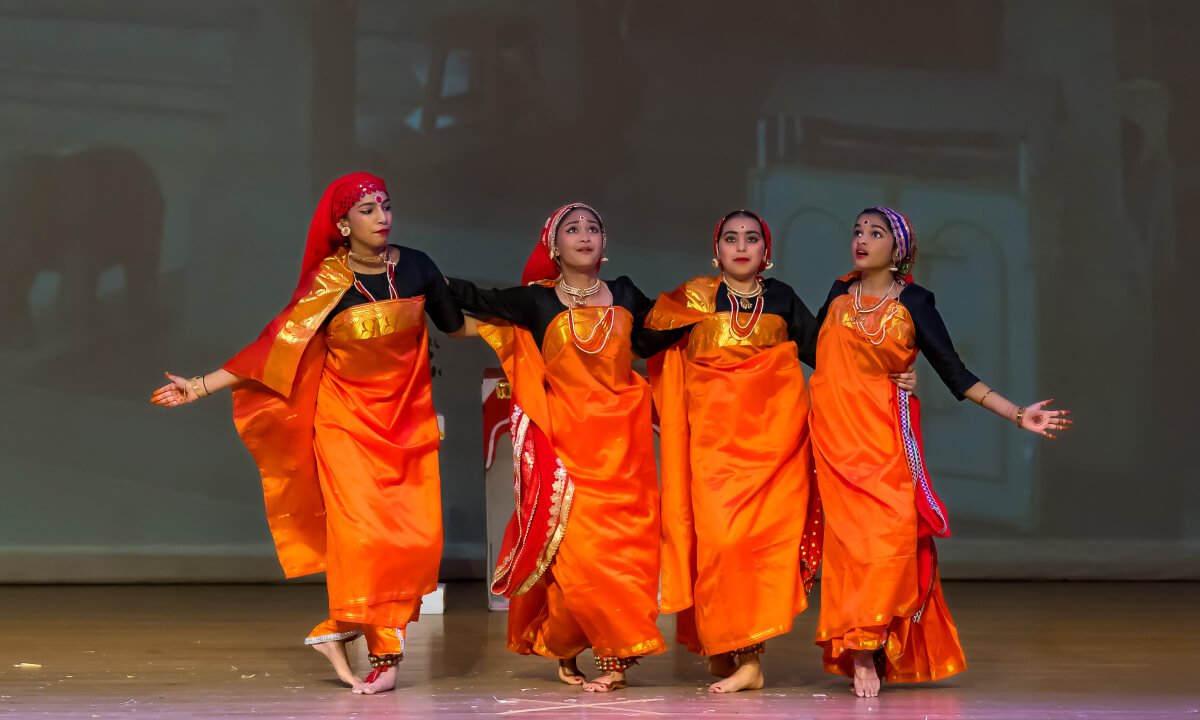folk dance
A lively Kutch dance by the Rabari community, performed during weddings and festivals to celebrate their culture.

The Kodava folk dance, also known as “Kodava Natyam” or “Kodava dance,” originates from the picturesque Kodagu district in Karnataka, India. This traditional dance is deeply rooted in the cultural heritage of the Kodava people, an indigenous community known for their unique customs, language (Kodava Takk), and vibrant traditions. The Kodava dance is an essential expression of the Kodava community’s identity, celebrated with pride and reverence.
Kodava dance is commonly performed during festive occasions and ceremonies, such as weddings, and festivals like Kailpodh and Cauvery Shankaramana, along with various cultural gatherings. These performances showcase the rich heritage of the Kodava people and serve as a medium to celebrate their distinct way of life and values.
NSDA students performing Kodava on stage.
The attire worn during the Kodava dance is traditional and symbolizes the elegance of Kodava culture. Men wear the traditional Kupya, a black coat-like garment adorned with intricate embroidery, worn over a white shirt and black trousers. The attire is completed with a peche kathi (turban) and a ceremonial dagger (kathi) tucked into the waist, representing strength and valor. Kodava women wear traditional Coorg-style sarees with intricate designs, complemented by traditional jewelry, including bangles, necklaces, and earrings, adding to the grandeur of the performance.
The Kodava dance is accompanied by the rhythmic beats of traditional instruments, primarily the Dudi (a drum-like percussion instrument), Peechale (a trumpet), and Kombu (horn). These instruments set a lively pace and enhance the energy of the performance, creating an atmosphere of celebration and unity.
Students wearing colorful attire on stage.
Kodava dance movements are graceful and synchronized, with dancers forming intricate patterns and formations that reflect the unity and strength of the Kodava people. The choreography often incorporates elements of storytelling, passed down through generations, preserving the narratives and values of the Kodava culture. Through its captivating movements, vibrant attire, and powerful music, the Kodava dance brings the community together, symbolizing pride, unity, and cultural heritage.